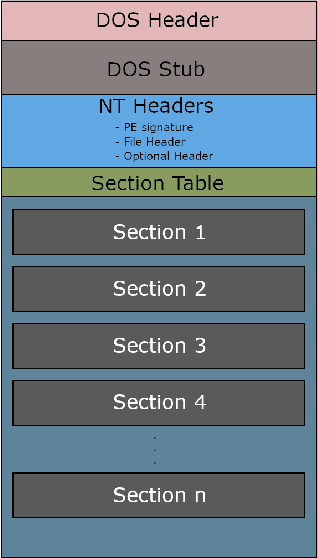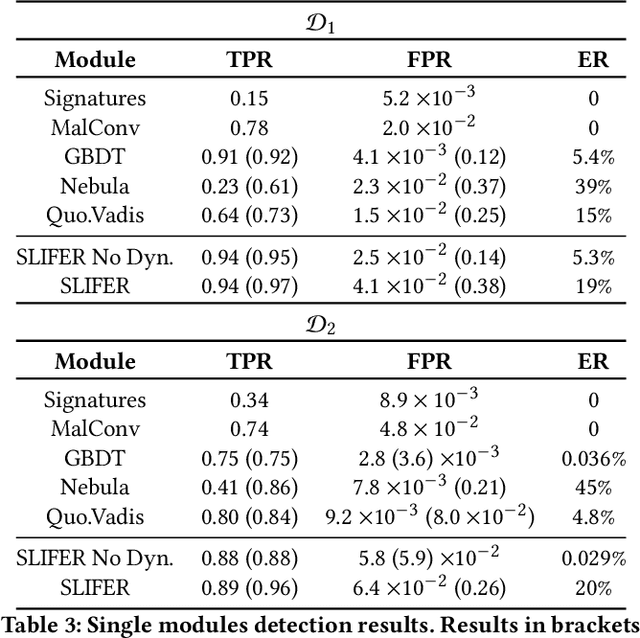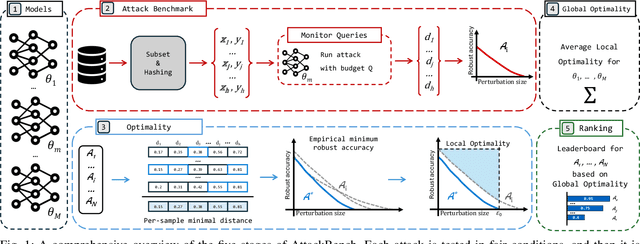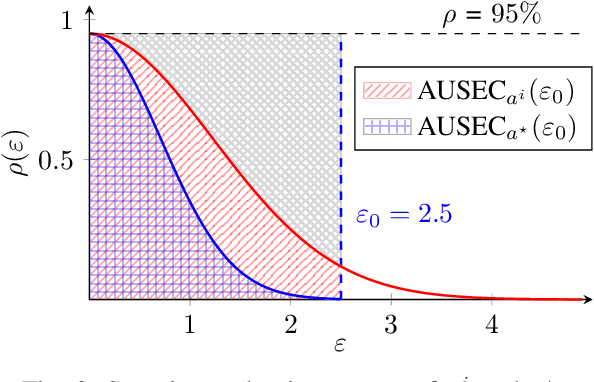Battista Biggio
University of Cagliari
On the Robustness of Adversarial Training Against Uncertainty Attacks
Oct 29, 2024Abstract:In learning problems, the noise inherent to the task at hand hinders the possibility to infer without a certain degree of uncertainty. Quantifying this uncertainty, regardless of its wide use, assumes high relevance for security-sensitive applications. Within these scenarios, it becomes fundamental to guarantee good (i.e., trustworthy) uncertainty measures, which downstream modules can securely employ to drive the final decision-making process. However, an attacker may be interested in forcing the system to produce either (i) highly uncertain outputs jeopardizing the system's availability or (ii) low uncertainty estimates, making the system accept uncertain samples that would instead require a careful inspection (e.g., human intervention). Therefore, it becomes fundamental to understand how to obtain robust uncertainty estimates against these kinds of attacks. In this work, we reveal both empirically and theoretically that defending against adversarial examples, i.e., carefully perturbed samples that cause misclassification, additionally guarantees a more secure, trustworthy uncertainty estimate under common attack scenarios without the need for an ad-hoc defense strategy. To support our claims, we evaluate multiple adversarial-robust models from the publicly available benchmark RobustBench on the CIFAR-10 and ImageNet datasets.
Adversarial Pruning: A Survey and Benchmark of Pruning Methods for Adversarial Robustness
Sep 02, 2024Abstract:Recent work has proposed neural network pruning techniques to reduce the size of a network while preserving robustness against adversarial examples, i.e., well-crafted inputs inducing a misclassification. These methods, which we refer to as adversarial pruning methods, involve complex and articulated designs, making it difficult to analyze the differences and establish a fair and accurate comparison. In this work, we overcome these issues by surveying current adversarial pruning methods and proposing a novel taxonomy to categorize them based on two main dimensions: the pipeline, defining when to prune; and the specifics, defining how to prune. We then highlight the limitations of current empirical analyses and propose a novel, fair evaluation benchmark to address them. We finally conduct an empirical re-evaluation of current adversarial pruning methods and discuss the results, highlighting the shared traits of top-performing adversarial pruning methods, as well as common issues. We welcome contributions in our publicly-available benchmark at https://github.com/pralab/AdversarialPruningBenchmark
Sonic: Fast and Transferable Data Poisoning on Clustering Algorithms
Aug 14, 2024



Abstract:Data poisoning attacks on clustering algorithms have received limited attention, with existing methods struggling to scale efficiently as dataset sizes and feature counts increase. These attacks typically require re-clustering the entire dataset multiple times to generate predictions and assess the attacker's objectives, significantly hindering their scalability. This paper addresses these limitations by proposing Sonic, a novel genetic data poisoning attack that leverages incremental and scalable clustering algorithms, e.g., FISHDBC, as surrogates to accelerate poisoning attacks against graph-based and density-based clustering methods, such as HDBSCAN. We empirically demonstrate the effectiveness and efficiency of Sonic in poisoning the target clustering algorithms. We then conduct a comprehensive analysis of the factors affecting the scalability and transferability of poisoning attacks against clustering algorithms, and we conclude by examining the robustness of hyperparameters in our attack strategy Sonic.
HO-FMN: Hyperparameter Optimization for Fast Minimum-Norm Attacks
Jul 11, 2024



Abstract:Gradient-based attacks are a primary tool to evaluate robustness of machine-learning models. However, many attacks tend to provide overly-optimistic evaluations as they use fixed loss functions, optimizers, step-size schedulers, and default hyperparameters. In this work, we tackle these limitations by proposing a parametric variation of the well-known fast minimum-norm attack algorithm, whose loss, optimizer, step-size scheduler, and hyperparameters can be dynamically adjusted. We re-evaluate 12 robust models, showing that our attack finds smaller adversarial perturbations without requiring any additional tuning. This also enables reporting adversarial robustness as a function of the perturbation budget, providing a more complete evaluation than that offered by fixed-budget attacks, while remaining efficient. We release our open-source code at https://github.com/pralab/HO-FMN.
ModSec-Learn: Boosting ModSecurity with Machine Learning
Jun 19, 2024Abstract:ModSecurity is widely recognized as the standard open-source Web Application Firewall (WAF), maintained by the OWASP Foundation. It detects malicious requests by matching them against the Core Rule Set (CRS), identifying well-known attack patterns. Each rule is manually assigned a weight based on the severity of the corresponding attack, and a request is blocked if the sum of the weights of matched rules exceeds a given threshold. However, we argue that this strategy is largely ineffective against web attacks, as detection is only based on heuristics and not customized on the application to protect. In this work, we overcome this issue by proposing a machine-learning model that uses the CRS rules as input features. Through training, ModSec-Learn is able to tune the contribution of each CRS rule to predictions, thus adapting the severity level to the web applications to protect. Our experiments show that ModSec-Learn achieves a significantly better trade-off between detection and false positive rates. Finally, we analyze how sparse regularization can reduce the number of rules that are relevant at inference time, by discarding more than 30% of the CRS rules. We release our open-source code and the dataset at https://github.com/pralab/modsec-learn and https://github.com/pralab/http-traffic-dataset, respectively.
Over-parameterization and Adversarial Robustness in Neural Networks: An Overview and Empirical Analysis
Jun 14, 2024Abstract:Thanks to their extensive capacity, over-parameterized neural networks exhibit superior predictive capabilities and generalization. However, having a large parameter space is considered one of the main suspects of the neural networks' vulnerability to adversarial example -- input samples crafted ad-hoc to induce a desired misclassification. Relevant literature has claimed contradictory remarks in support of and against the robustness of over-parameterized networks. These contradictory findings might be due to the failure of the attack employed to evaluate the networks' robustness. Previous research has demonstrated that depending on the considered model, the algorithm employed to generate adversarial examples may not function properly, leading to overestimating the model's robustness. In this work, we empirically study the robustness of over-parameterized networks against adversarial examples. However, unlike the previous works, we also evaluate the considered attack's reliability to support the results' veracity. Our results show that over-parameterized networks are robust against adversarial attacks as opposed to their under-parameterized counterparts.
SLIFER: Investigating Performance and Robustness of Malware Detection Pipelines
May 23, 2024



Abstract:As a result of decades of research, Windows malware detection is approached through a plethora of techniques. However, there is an ongoing mismatch between academia -- which pursues an optimal performances in terms of detection rate and low false alarms -- and the requirements of real-world scenarios. In particular, academia focuses on combining static and dynamic analysis within a single or ensemble of models, falling into several pitfalls like (i) firing dynamic analysis without considering the computational burden it requires; (ii) discarding impossible-to-analyse samples; and (iii) analysing robustness against adversarial attacks without considering that malware detectors are complemented with more non-machine-learning components. Thus, in this paper we propose SLIFER, a novel Windows malware detection pipeline sequentially leveraging both static and dynamic analysis, interrupting computations as soon as one module triggers an alarm, requiring dynamic analysis only when needed. Contrary to the state of the art, we investigate how to deal with samples resistance to analysis, showing how much they impact performances, concluding that it is better to flag them as legitimate to not drastically increase false alarms. Lastly, we perform a robustness evaluation of SLIFER leveraging content-injections attacks, and we show that, counter-intuitively, attacks are blocked more by YARA rules than dynamic analysis due to byte artifacts created while optimizing the adversarial strategy.
Certified Adversarial Robustness of Machine Learning-based Malware Detectors via (De)Randomized Smoothing
May 01, 2024Abstract:Deep learning-based malware detection systems are vulnerable to adversarial EXEmples - carefully-crafted malicious programs that evade detection with minimal perturbation. As such, the community is dedicating effort to develop mechanisms to defend against adversarial EXEmples. However, current randomized smoothing-based defenses are still vulnerable to attacks that inject blocks of adversarial content. In this paper, we introduce a certifiable defense against patch attacks that guarantees, for a given executable and an adversarial patch size, no adversarial EXEmple exist. Our method is inspired by (de)randomized smoothing which provides deterministic robustness certificates. During training, a base classifier is trained using subsets of continguous bytes. At inference time, our defense splits the executable into non-overlapping chunks, classifies each chunk independently, and computes the final prediction through majority voting to minimize the influence of injected content. Furthermore, we introduce a preprocessing step that fixes the size of the sections and headers to a multiple of the chunk size. As a consequence, the injected content is confined to an integer number of chunks without tampering the other chunks containing the real bytes of the input examples, allowing us to extend our certified robustness guarantees to content insertion attacks. We perform an extensive ablation study, by comparing our defense with randomized smoothing-based defenses against a plethora of content manipulation attacks and neural network architectures. Results show that our method exhibits unmatched robustness against strong content-insertion attacks, outperforming randomized smoothing-based defenses in the literature.
AttackBench: Evaluating Gradient-based Attacks for Adversarial Examples
Apr 30, 2024



Abstract:Adversarial examples are typically optimized with gradient-based attacks. While novel attacks are continuously proposed, each is shown to outperform its predecessors using different experimental setups, hyperparameter settings, and number of forward and backward calls to the target models. This provides overly-optimistic and even biased evaluations that may unfairly favor one particular attack over the others. In this work, we aim to overcome these limitations by proposing AttackBench, i.e., the first evaluation framework that enables a fair comparison among different attacks. To this end, we first propose a categorization of gradient-based attacks, identifying their main components and differences. We then introduce our framework, which evaluates their effectiveness and efficiency. We measure these characteristics by (i) defining an optimality metric that quantifies how close an attack is to the optimal solution, and (ii) limiting the number of forward and backward queries to the model, such that all attacks are compared within a given maximum query budget. Our extensive experimental analysis compares more than 100 attack implementations with a total of over 800 different configurations against CIFAR-10 and ImageNet models, highlighting that only very few attacks outperform all the competing approaches. Within this analysis, we shed light on several implementation issues that prevent many attacks from finding better solutions or running at all. We release AttackBench as a publicly available benchmark, aiming to continuously update it to include and evaluate novel gradient-based attacks for optimizing adversarial examples.
Living-off-The-Land Reverse-Shell Detection by Informed Data Augmentation
Feb 28, 2024



Abstract:The living-off-the-land (LOTL) offensive methodologies rely on the perpetration of malicious actions through chains of commands executed by legitimate applications, identifiable exclusively by analysis of system logs. LOTL techniques are well hidden inside the stream of events generated by common legitimate activities, moreover threat actors often camouflage activity through obfuscation, making them particularly difficult to detect without incurring in plenty of false alarms, even using machine learning. To improve the performance of models in such an harsh environment, we propose an augmentation framework to enhance and diversify the presence of LOTL malicious activity inside legitimate logs. Guided by threat intelligence, we generate a dataset by injecting attack templates known to be employed in the wild, further enriched by malleable patterns of legitimate activities to replicate the behavior of evasive threat actors. We conduct an extensive ablation study to understand which models better handle our augmented dataset, also manipulated to mimic the presence of model-agnostic evasion and poisoning attacks. Our results suggest that augmentation is needed to maintain high-predictive capabilities, robustness to attack is achieved through specific hardening techniques like adversarial training, and it is possible to deploy near-real-time models with almost-zero false alarms.
 Add to Chrome
Add to Chrome Add to Firefox
Add to Firefox Add to Edge
Add to Edge